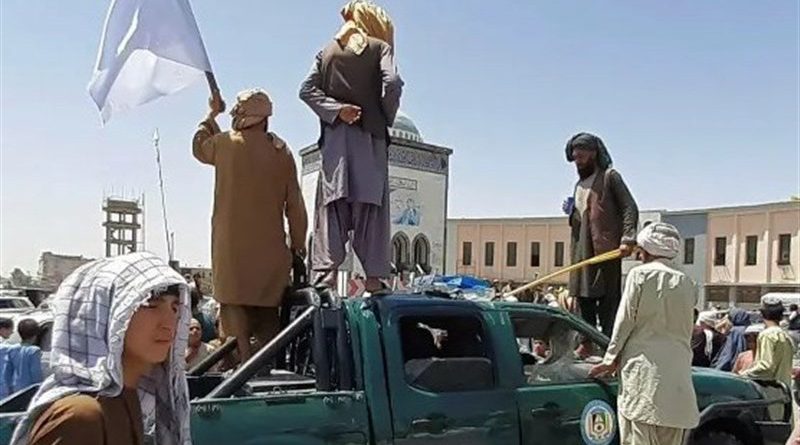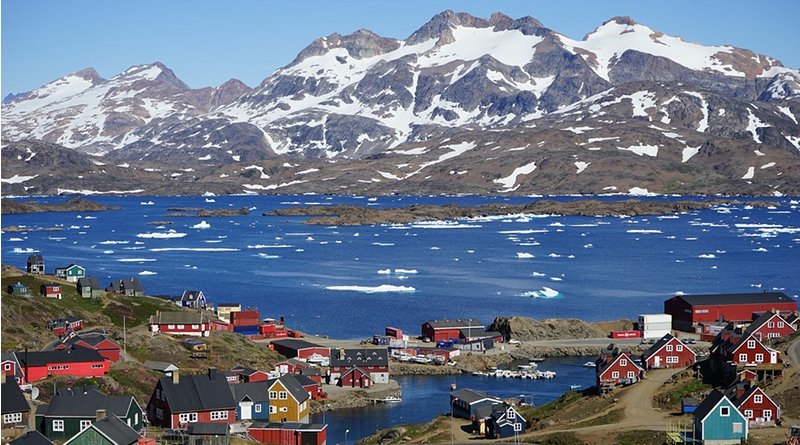First Published in Eurasia Review, 23 August 2021
The unfolding events in Afghanistan amid persisting uncertainty and growing anxiety in Kabul have a very complex, yet diverse responses—from state to nonstate actors, from thinktanks to political commentators. Frantic efforts still get underway to ‘rescue’ panic-struck people who keep thronging to the Hamid Karzai international airport. The most important crisis for the fundamentalist Taliban forces in Kabul is trust-deficit. Given its track record of violation of human rights in the past—as a ruling regime (1996-2001) and later as a fighting force (2001-2021)—people and governments across the world cannot be blamed for their downbeat mindset. ‘Who is trusting whom’ is a bewildering scenario of the Afghan society today.
There are also reports that US military may stay beyond 31 August to complete the evacuation process. Though the Taliban have ‘taken control’ of Kabul, the uncertainty regarding the nature and composition of the new ruling dispensation gets prolonged even after a week. The Taliban’s offer of ‘amnesty,’ ‘restraint’ and ‘peaceful’ handling of ‘transfer of power’ appeared to be a false rosy package, and it has been exposed by itself with violence and attacks being resorted to by its ‘rank and file’ in many places across the country since 15 August. But they were noticeably widespread in different stages of their march to Kabul. Moreover, reports from Panjshir Valley, Pul-e-Hesar, Deh-e-Salah and Banu indicate that all is not well for the Jihadi outfits in Kabul. Writing in Washington Post, Ahmad Massoud—the son of Ahmad Shah Massoud—is confident that the Taliban “is not a problem for the Afghan people alone. Under Taliban control, Afghanistan will without doubt become ground zero of radical Islamist terrorism; plots against democracies will be hatched here once again.” But the capability of the so-called ‘Northern Alliance’ is doubtful this time with countries like China, Russia and Pakistan throwing their full weight behind the Taliban.
However, the dilemma of many countries is how to deal with the Taliban-in-Kabul. In the foreign affairs registry of these countries, the Taliban still remains a ‘terrorist’ organisation having a sordid record of human rights violations, illicit drug trade, several bouts of violence against women and children, sheltering (and being in connivance with) other terrorist/jihadi outfits etc. This is also the case with international and regional organisations (like the U.N. and the European Union) who continued to treat the Taliban as a ‘terrorist’ outfit. What makes more burdensome is that the Taliban ‘comes to power’ not through any democratic process; nor as a result of any power-sharing arrangement, as a follow up of the deal that they had made with the Trump administration.
In fact, the Taliban itself violated the very spirit of the agreement albeit the Trump administration had gone out of the way in yielding to the pressures of the outfit. The agreement says: “The participants of intra-Afghan negotiations will discuss the date and modalities of a permanent and comprehensive ceasefire, including joint implementation mechanisms, which will be announced along with the completion and agreement over the future political roadmap of Afghanistan.” The ‘negotiations’ underway in Kabul post-15 August do not correspond with the deal. Rather, the ongoing power-sharing bargains are in sheer violation of the deal itself.
But the US seemed to have been more concerned about getting the US and other NATO prisoners (nearly a thousand) released from the Taliban strongholds in return for the release of up to 5,000 prisoners of “the Islamic Emirate of Afghanistan which is not recognized by the United States as a state and is known as the Taliban,” as repeatedly referred to in the deal. The United States also got an assurance from the Taliban that “its released prisoners will be committed to the responsibilities mentioned in this agreement so that they will not pose a threat to the security of the United States and its allies.” The U.S. is actually struggling to ensure this through its evacuation drive. However, the deal was absolutely silent on the Afghan Government in place in Kabul and the fact that its role was completely relegated to the backyard of negotiations was a clear indication of the shape of things to emerge. The deal eventually strengthened the hands of the Taliban and betrayed the cause of the people who really mattered in the scheme of things. So, trust-deficit has been a part of the U.S.-Taliban deal itself. What made things more fluid for the jihadi outfit was the misgovernance of the Kabul regime and its impact on the state army personnel who were already disgruntled by their pay and perks. Obviously, this brewing ‘deficit crisis’ in other sectors of the government accelerated the process, and it is likely to snowball in the coming days with the Taliban bounding towards people with its fangs bared.
For countries like China, Russia, Iran and Pakistan, the ‘rise of the Taliban’ amounts to offsetting the American strategy in the South, Central and West Asian regions. But little do they realise that fostering a fundamentalist-jihadi force in sensitive region like South-West Asia would be a political suicide, and the manner in which the Taliban were supported, both overtly and covertly, in antagonistic perception of a U.S.-led western world is a clear vindication of the ‘realpolitik of expediency.’
The U.S. has undoubtedly fumbled in handling the Afghan crisis, from one phase to another. The Biden Administration inherited all smouldering timbers of the past four decades and, more importantly, the ‘Trump-Taliban deal’ of 2020 turned out to be the beginning of a disaster. According to former U.S. Defense Secretary, Mark Esper, it was Donald Trump who himself ‘undermined’ the deal by pushing for American forces to leave Afghanistan without the Taliban fulfilling the conditions of the Doha agreement. Biden has his ‘logical’ justification saying,
when I became President, I faced a choice—follow through on the deal, with a brief extension to get our Forces and our allies’ Forces out safely, or ramp up our presence and send more American troops to fight once again in another country’s civil conflict. I was the fourth President to preside over an American troop presence in Afghanistan—two Republicans, two Democrats. I would not, and will not, pass this war onto a fifth.
The Taliban’s unexpected ‘rise’ would have surprised many, but it has been facilitated by many endogenous and exogenous factors. The latter is obviously related to the games of the big players as well as regional actors. Its systematic operations, notwithstanding the twenty-years’ fighting with the U.S. and NATO forces, have been sustained by funding from different sources. If the outfit has been able to generate as much as $2 billion a year, it means many things. A Report of the U.N, in June 2021, says that most of its funds are from criminal activity which included opium production, drug trafficking, blackmail and kidnapping for ransom. The Taliban, which had banned opium production when it was ruling, reversed its stand by relying on the same for ‘holy jihad.’ According to the U.N. report, the Taliban leaders have also amassed funds from natural resources in areas under their control through mining operations. They were also mobilising money by way of donations from network of nongovernmental charitable foundations and other rich people. The Gulf countries were directly and indirectly supporting them. The U.S. officials had also accused Russia of giving money, weapons and training to the Taliban. Similar charges were made against Pakistan and Iran also, for their anti-U.S. and anti-NATO stance in the emerging geopolitics of the region.
Fahd Husain, Dawn’s resident editor, writes that “Pakistan, China and Russia have consolidated their positions in the region as a result of the latest developments in Afghanistan while the US and India have lost out.” He concludes his analysis thus: “Exciting and uncertain times are upon us. With the two-decade-long chapter that started with the 9/11 attacks now closing, a new and promising one is opening up in our region. Are we positioned well to leverage the huge opportunities that may be on offer in the months and years to come?” Among the “possible advantages” that Fahd Husain envisaged for Pakistan are: (1) Kabul will not have a pro-India regime with an intelligence service like NDS actively promoting instability in Pakistan; (2) Peace in Afghanistan would mean reduced pressure of refugees coming into Pakistan, and possibly at a future date a return of some of the nearly four million Afghan refugees currently in Pakistan; (3) Pakistan could open up a land route to Central Asia and beyond and push forward its geoeconomic agenda etc. President Iran Khan’s speech in Islamabad after the Taliban take over reflected a similar mood.
If the mindset in Pakistan is like this, the scenario in other neighbouring countries is equally disquieting. The Iranian President Ebrahim Raisi said, in talks with outgoing Foreign Minister Mohammad Javad Zarif, that “The military defeat and pullout of the U.S. from Afghanistan must be turned into an opportunity to revive life, security and sustainable peace in the country.” The Russian ambassador to Afghanistan Dmitry Zhirnov admired the Taliban’s conduct saying the group had made Kabul “safer in the first 24 hours.” He described the Taliban’s overall approach as “good, positive and business-like.” Chinese State Councilor and Foreign Minister Wang Yi reiterated China’s hope that “the Afghan Taliban will put the interests of the country first, hold high the banner of peace talks, set the goal of peace, build a positive image, and pursue an inclusive policy.” According to The Global Times editorial, “Compared with countries outside the region, such as the US and some European countries, China is more willing to see a prosperous and stable Afghanistan.” For each of these powers, the Afghan crisis is an ‘opportunity’, either to settle scores with the U.S and NATO, or to extract new benefits from Kabul for larger geoeconomic interests.
Even as the impasse continues, amid frantic evacuation and soaring cases of violence, the Taliban forces are set to launch a fresh round of fight with its rivals in different areas, such as in Panjshir Valley. If it causes a new spell of prolonged fight, the efforts in place for an ‘inclusive’ government would remain a distant goal. Afghanistan would naturally plunge into yet another ethno-tribal internecine war. This will also send a grim signal to the ‘prospective’ regional partners of the Taliban-in-Kabul.




